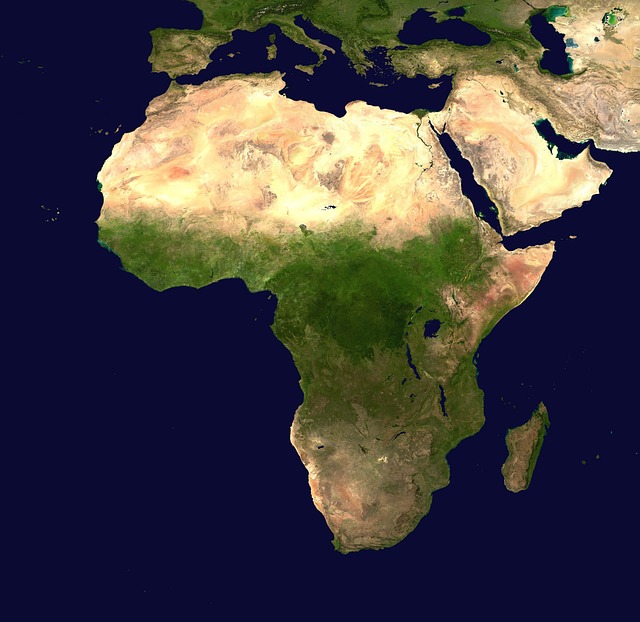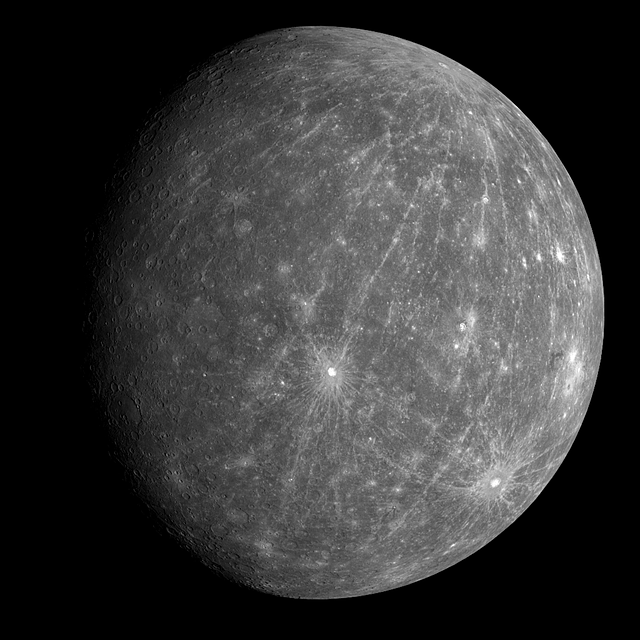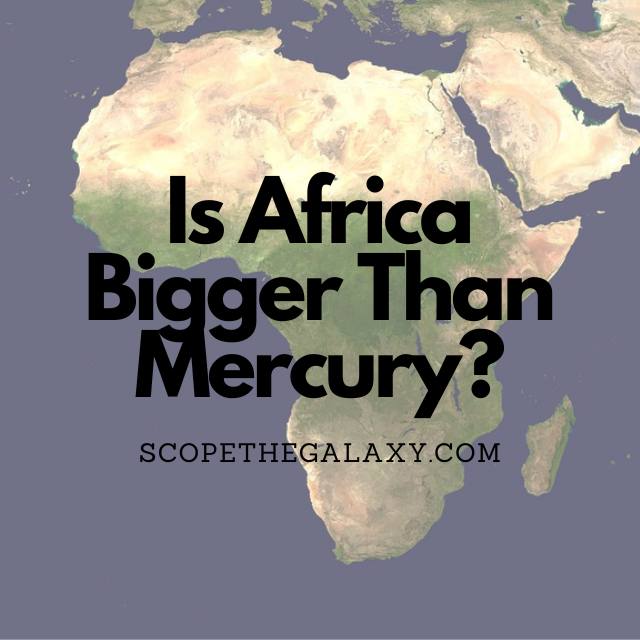*This post may contain affiliate links. This means we may make a commission if you purchase an item using one of our links*
Africa is the second largest of all Earth’s continents, whilst Mercury is the smallest planet in the solar system. Still, there’s no comparison regarding which one is bigger as Africa is a flat land mass with a surface area of 30.3 million square kilometers and a volume of 1.12 billion cubic kilometers while Mercury is a spherical entity with a surface area of 74.79 million square kilometers and a volume of 60.8 billion cubic kilometers.
For a more detailed look at how big both Africa and Mercury and how their size is differentiated, continue reading.
How Big Is Africa?

Africa is the Earth’s second largest continent covering a total area of approximately 30.3 million square kilometers, equal to about 20% of Earth’s total land mass or 6% of the planet’s surface area. Africa possesses the world’s largest desert, plus it has the longest river of any continent, the Nile.
Africa is the second highest populated continent on Earth. The continent has 54 countries, including Egypt, Nigeria, and Kenya, and it accounts for roughly 17% of the world’s population, with more than 1.4 billion people.
There are eight main physical regions of Africa: the Sahara, the savanna, the rainforest, the Great Lakes, the Sahel, the Ethiopian Highlands, the Swahili Coast, and southern Africa. The Sahara Desert extends over the northern third of Africa and is one of the most inhospitable places on Earth. Its size is 9.2 million square kilometers – roughly the same size as the entire United States.
The African savannah is a vast grassland that covers most of the African continent (around 65%). It extends from the Red Sea at the east to the Atlantic Ocean in the west and from Senegal in the north to Sudan in the south.
A savannah is a type of landscape that consists of grasslands with few trees, bushes, or shrubs. The grasses are typically short but can grow up to almost four meters tall. The dominant vegetation is acacia and baobab trees, which provide shade and shelter for animals during daytime hours.
Africa possesses some of the world’s highest mountains; Mount Kilimanjaro is the tallest, which rises 19,341 feet from its base near the equator to its peak in Tanzania. Africa extends to a length of 8,000km between its northern and southern extremities in Tunisia and South Africa; its width of 7,400km stretches from Xaafuun Point in Somalia to Almadi Point in Senegal.
The thickness of Earth’s crust ranges from 5 to 70km and is generally thicker under continental land where it averages 40km. Taking this figure and multiplying it by Africa’s surface area, we can calculate the rough volume of the continent at 1.21 billion cubic kilometers. This might sound like a sizable volume, but it’s no match for the almost 60.8 billion cubic kilometers of Mercury’s volume.
How Big Is Mercury?

Mercury is the smallest planet in the Milky Way, with a diameter of 4,878km – around 50% larger than the diameter of Mercury. At only two-fifths the size of Earth, Mercury is even smaller than the largest moons in our solar system, Ganymede and Titan.
This planet is a similar size to our moon and is only 58 million kilometers from the Sun, which means that the Sun would appear three times larger if we were standing on Mercury compared to standing on Earth. And because of this proximity, surface temperatures reach as high as 430 degrees Celsius during the day.
This rocky planet possesses an iron core that comprises a large part of the interior; it accounts for around three-quarters of Mercury’s diameter. Approximately 70% of Mercury’s weight is attributed to its iron, with the core a similar size to our moon. Atop the core sits a rocky mantle of approximately 55km in thickness.
The surface of Mercury is similar to that of our moon, with a number of impact craters caused by meteorite collisions. Some of the most significant impact basins include Caloris (with a diameter of 1,550km) and Rachmaninoff (with a diameter of 306km), created by early asteroid impacts.
Mercury has many areas of smooth terrain, along with cliffs that stretch for hundreds of kilometers and reach up to a mile into the sky. These cliffs were formed over billions of years as Mercury’s interior cooled and contracted.
And NASA’s research into these cliff-like landforms – or scarps – shows that Mercury continues to shrink. The size of the scarps displays their youth and suggests that Mercury is still tectonically active, just like Earth. As the interior continues to cool, the planet will continue to contract.
The surface area of Mercury is around 74,797,000 square kilometers, more than 2 times the surface area of the African continent.
Furthermore, Mercury is spherical in shape so it’s overall volume would blow the value of any if not all countries and continents on Earth, out of the water.
This is because Mercury’s volume of 60.8 billion cubic kilometers makes it so Africa’s volume doesn’t even come close to the cubic measure of even the smallest planet in our solar system.
Summary
Although Africa is the 2nd largest continent on Earth, it isn’t anywhere the size of Mercury, after all spherical objects will always be larger than flatter objects, if all things are equal.
Africa’s length is around 8,000km from north to south, which is almost double Mercury’s but Mercury is consistently 4,878km from all angles which results in a far larger surface area and a cubic volume that is around 50 times that of the African continent.

